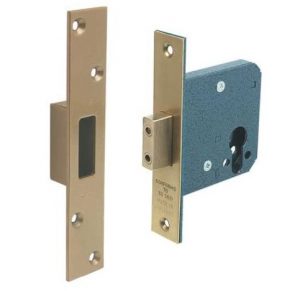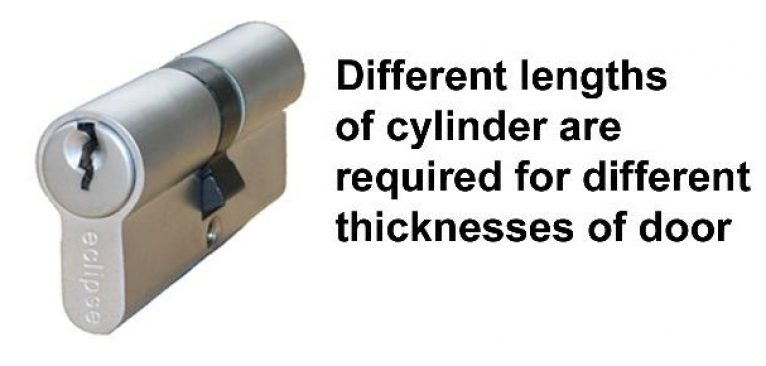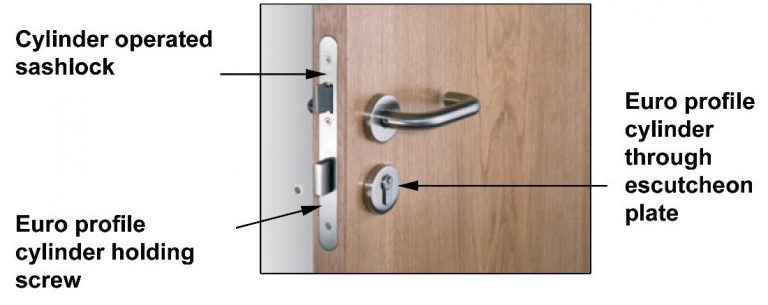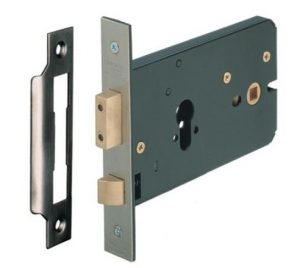What Are The Different Types Of Lock Cylinder?

Securing a property is top on the priority list for ensuring that you feel safe and protected and with so many different locking mechanisms available on the market, it is not always easy to choose the best security locking system for your property.
In this Wonkee Donkee article, we explain what is a cylinder lock and what are the different types of cylinder lock available on the market.
What is a Cylinder Lock?
To put it simply a cylinder lock is a security mechanism that uses a set of different length metal pins in order to be locked or unlocked by a key. The way in which they work is that the lengths of the pins are designed for the specific key used to open it. The pattern on the key fits specifically to the pins and when the exact key is inserted and turned the pins move into the correct position in order to turn and the bolt or latch be retracted.
What are the different types of Cylinder Lock?
Now that you know what a cylinder lock is, it is time to learn about what are the different types of cylinder locks are and what makes them unique.
Euro Cylinder Locks

Probably the most common cylinder lock you have come across is the Euro cylinder lock. There are lots of variations in the designs of this type of lock, however, they all work with the same core mechanism as we described above.
As all of the locking mechanisms use the same technology, the main difference between the most popular Euro cylinder locks available on the market is their accessibility features. As we previously mentioned there are thousands of different designs that exist but the easiest way to choose which type of Euro cylinder lock to select is by the opening and closing mechanisms. For this, there are three main options.
The single-cylinder Euro lock is designed with a keyhole on only one side and only allows the door to be unlocked from the external side. The second option is the double-cylinder Euro lock, this allows you to use the key in order to lock and unlock the door from either side. The final system is the key and latch option, this design allows you to unlock the door from the external side of the door and lock or unlock using a latch on the internal side of the door.
The one issue with Euro cylinder locks is the weakness against picking or bumping off as they are typically door-mounted locks. As the lock mechanism sits within the mounted box and not the door an intruder can place large amounts of impact on the box in an attempt to dismount it.
As you’d expect, the vulnerability of this basic design has led to many different (and more technical) Euro cylinder lock designs being created. These incorporate much better security mechanisms such as anti-snap, anti-bump and anti-pick technology which makes it much harder for intruders to bypass them. Most of this new technology stays more secure not by being too tough to break, but by breaking on the side as opposed to in the middle which leaves the latch still in place and prevents the intruder from gaining access.
Oval Cylinder Locks

As you would expect, an oval cylinder lock has an oval-shaped barrel as opposed to the circle-shaped barrel used in standard cylinder locks. They also include the addition of an oval mortice lock case which is one of the easiest ways to define an oval cylinder lock if you are looking at replacing the current locking mechanism on a door.
Other than those two key differences they are very similar to the Euro lock and operate in the same way.
Mortice Cylinder Locks

Whenever we talk about mortice locks the information we give is fairly similar and this is because the majority of mortice locks operate in exactly the same way. In terms of mortice cylinder locks, they tend to be much larger and sturdier than standard cylinder locks. The body of the lock is large and rounded, with much higher security as the lock sits within the door as opposed to being mounted upon it. This prevents intruders from being able to bump-off the locks and provides a much higher level of security.
On the other hand, the benefit of being sturdier and more secure is that the mortice locks tend to be much larger in size which makes them only suitable for certain types of doors.
Key In Knob Cylinder Locks
Often referred to as ‘KIK Cylinders’, this type of cylinder lock is very unique and comes in many different shapes and sizes. The best way to install a ‘key in knob’ cylinder is to place it within a metal door handle or doorknob. The reasoning for this is that if not it is very similar to mounted locks which can easily be removed with force by an intruder.
At Wonkee Donkee, we wouldn’t recommend a KIK cylinder lock unless you are getting a locksmith to install it as they can be very technical and fiddly in order to install.
Interchangeable Cylinder Locks
To be exact, an interchangeable core cylinder is not exactly a singular design or a type of cylinder lock, but more a feature that many cylinder locks include. What they do is exactly what it says on the tin. They allow you to easily interchange the cylinder core from a lock in order to change the key that opens it. This can be an important feature to have and may save you money in the long term as you can simply change the cylinder core rather than the whole lock itself. This can be useful if you have lost your keys or if you wish to prevent someone with a key from entering your property.
Saying this, as a whole interchangeable cylinder locks are typically more expensive to purchase. This means that you should consider the likelihood of needing the ease of interchangeable cylinder against the cost.






